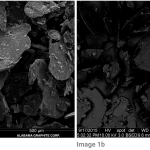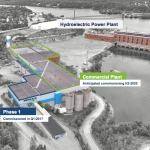Grid-scale Energy Storage: Lux Predicts $113.5 Billion in Global Demand by 2017
John Petersen Last month Lux Research released a bottom-up evaluation of the cost effectiveness of eight energy storage technologies in six grid-scale applications throughout 44 countries, including all 50 U.S. states. Their report titled "Grid Storage under the Microscope: Using Local Knowledge to Forecast Global Demand" predicts that annual global demand for grid-scale energy storage will reach an astounding 185.4 gigawatt-hours (GWh) by 2017 and represent a $113.5 billion incremental revenue opportunity for an industry that currently generates sales of $50 to $60 billion a year. In the grid-scale sector alone, Lux predicts an average...
NanoMarkets LLC Forecasts $8.3 Billion Annual Market For Smart Grid Batteries By 2016
In August of last year I wrote an article titled "Grid-based Energy Storage: Birth of a Giant." Over the last 12 months I've written a series of follow-on articles that discuss the principal classes of manufactured energy storage devices and the companies that are making or planning to make products for smart grid energy storage applications. My entire archive of articles on the energy storage sector is available here. One of the biggest problems I've encountered over the last year has been a dearth of reliable third party information that can help investors understand the breadth and...
Why Lead-Carbon Batteries Will Deflate the Lithium-Ion Bubble
John Petersen For over a year I've been cautioning readers that while lithium-ion batteries are glamorous, sleek, sexy and hot; they are about to face a formidable challenge from lead-carbon batteries that are a little bulkier and heavier, but offer competitive cycle-life and power for a tiny fraction of the cost. To placate lithium fundamentalists and EV evangelists, I want to clearly state up front that lead-carbon batteries will probably not be the first choice for plug-in vehicles. Nevertheless, it is crystal clear that lead-carbon batteries will be the only sensible choice...
Flux Powers into Battery Management
by Debra Fiakas CFA Proper electric and thermal management of advanced battery packs is imperative. During operation, voltage and temperature differences in the battery cells can lead to electrical imbalances and decrease system performance. A good battery management system can ensure strong power delivery and extend battery life. Dozens of battery management systems have cropped up to fill this need for the lithium ion batteries used in new electric vehicles and alternative energy applications. The highly populated field has not intimidated the newest competitor, Flux Power Holdings, Inc. (FLUX: OTC/BB). Flux is a 2008 spin-off of...
Energy Storage: Q-2 2012 Review and Analysis
John Petersen While I jumped the gun last week and published my third quarter outlook for the energy storage and vehicle electrification sectors early, it's worthwhile to take a look back and see how my tracking list of companies performed over the last quarter and examine the past to see what the tea leaves in the bottom of the cup portend for the coming quarter. So without further delay I'll present my price performance table for the second quarter that ended on Friday. Q-2 was a dreadful quarter for Maxwell Technologies (MXWL) and ZBB Energy...
Electrovaya’s Battery Bargain
by Debra Fiakas CFA Last week management of Electrovaya Inc. (EFL: TSX; EFLVF: OTC/QB) were forced to issue a statement stating there were no fundamental developments to explain a dramatic decline in its share price. The stock was trimmed back by 30% in two days under exceptional trading volume. Electrovaya has developed proprietary lithium ion polymer batteries for grid storage and transportation applications. Other than financial results for the quarter ending March 2017, the Company has had little to tell investors about the batteries, its customers or any other topic. Electrovaya distinguishes its lithium ion batteries among...
Take A Bromide For Flow Battery Frustration
by Debra Fiakas CFA The most recent article Vanadium Flow Battery Stocks: Barely A Dribble may have disappointed some investors who were expecting more opportunity for a stake in building energy storage. Large scale energy storage is an idea to which many in the utility industry speak, but few power producers have made significant investments beyond lithium ion batteries. Flow batteries have long been touted as a cost-effective and technically superior alternative for wind or solar power storage or for load-balancing efforts on the electric grid, as examples. In the last post we looked at the flow battery...
Yankee Graphite
Several graphite developers have made plans to integrate forward into the hottest segment of the market - battery-grade graphite. According to Industrial Minerals, spherical graphite suitable for lithium ion battery anodes is priced in a range of $2,700 to $2,800 per metric ton in China where many battery manufacturers are located. This compares quite well to the range of about $655 to $790 per metric ton for flake graphite concentrate.
The integration strategy has sent the sector into a frenzy of activity to prove their graphite meets expectations of battery manufacturers. The only graphite deposit in the U.S. mainland is under development by Westwater Resources...
Nemaska Sprints to Early Lead In Lithium Mining Race
Thank Elon Musk with his Tesla (TSLA) gigafactory for sparking a global obsession with lithium-ion batteries and the materials need to turn them out. Claimed by Musk to be the largest building in the world, the factory was planned to reach capacity in stages. By the time the factory is fully completed in 2020, production capacity is expected to be 150 gigawatt hours of battery packs.
Ever since construction of Musk’s gigafactory began in 2014, investors around the world have been fretting over the adequacy of lithium supplies in particular. The gigafactory concept appeared to trigger a whole slew of ‘me too’ factories...
Why Long Range EVs Can Never Be Cost Effective
by John Petersen America’s love affair with the automobile has always been based on the freedom of the road and the ability to hop in the car and drive wherever we want to go; be it to the corner store to buy a loaf of bread or out to the lake for a long weekend. Even though most of our trips are short, people invariably want the flexibility to go for a long drive when the open road beckons. Unfortunately, that mentality is disastrous when it comes to EV economics. I’ve been writing about energy...
White House Report: GM Volt is Not Ready for Prime Time
In it's March 30, 2009 summary determination that GM had failed to propose a viable bankruptcy alternative, the President's auto industry task force said:"GM is at least one generation behind Toyota on advanced, "green" powertrain development. In an attempt to leapfrog Toyota, GM has devoted significant resources to the Chevy Volt. While the Volt holds promise, it is currently projected to be much more expensive than its gasoline-fueled peers and will likely need substantial reductions in manufacturing cost in order to become commercially viable." This extraordinary conclusion has been public for weeks but I've not seen it...
EnerSys Invests in Lithium-Ion Battery Business
EnerSys (ENS) announced today that it has purchased a controlling interest in Modular Energy Devices, Inc. (ModEnergy), a development stage company. ModEnergy produces large format lithium-ion rechargeable batteries utilized in aerospace and defense applications as well as specialized standby power and commercial applications. ModEnergy, based in Westerly, Rhode Island, has developed a proprietary method for assembling lithium-ion cells into battery systems that are designed to be safer and more cost effective than competitive products currently available.
Graphite Producers In Production
by Debra Fiakas CFA The series on graphite resource development is completed with a discussion of the companies that are currently in production. The U.S. Geological Survey estimates 1.2 million metric tons of flake graphite are produced annually. The vast majority - 780,000 metric tons - are produced in China. India and Brazil follow with 170,000 metric tons and 80,000 metric tons, respectively. North America, which seems to show so much promise to the graphite resource developers that have been featured over the past few articles, is currently only contributing 30,000 metric tons per year to the graphite...
PHEVs and EVs; Plugging Into a Lump of Coal
John Petersen Since I've stirred up a hornet's nest over the last two weeks first by debunking the mythology that PHEVs and EVs will save their owners money and then by showing how PHEVs and EVs will sabotage America's drive for energy independence, I figured I might as well go for the triple-crown of harsh realities by showing readers that in the U.S., where 70% of electricity comes from burning hydrocarbons, PHEVs and EVs won't make a dent in CO2 emissions. They'll just take distributed CO2 emissions off the roads and centralize them in coal and gas...
No Battery Producer Left Behind
by Debra Fiakas CFA In late 2009, nine companies in the battery sector were recipients of American Reconstruction and Recovery Act (ARRA) funds awarded by the Department of Energy to jump start manufacturing capacity. By the end of December 2011, six of them had made enough progress to begin production. Three were lagging behind, including Exide Technologies (XIDE: Nasdaq) and its partner Axion Power International (AXPW: OTC/BB). Exide's Sundancer Electric Car, October 1973. Exide and Axion are not looking so quick today. Photo by Frank Lodge, EPA. Public Domain ...
What I Learned During Last Week’s Visit With ePower
John Petersen Last week I spent a couple days with ePower Engine Systems working my way through a variety of business and technical due diligence issues. As always happens with new clients, it was a full immersion course in how ePower’s technology works, what the documented performance of the current tractor is, and how that performance is expected to change as ePower: transitions from a four cylinder engine designed for stationary use to an EPA compliant six cylinder engine designed for the trucking industry; automates a new charge control system that will opportunistically charge the batteries in...




